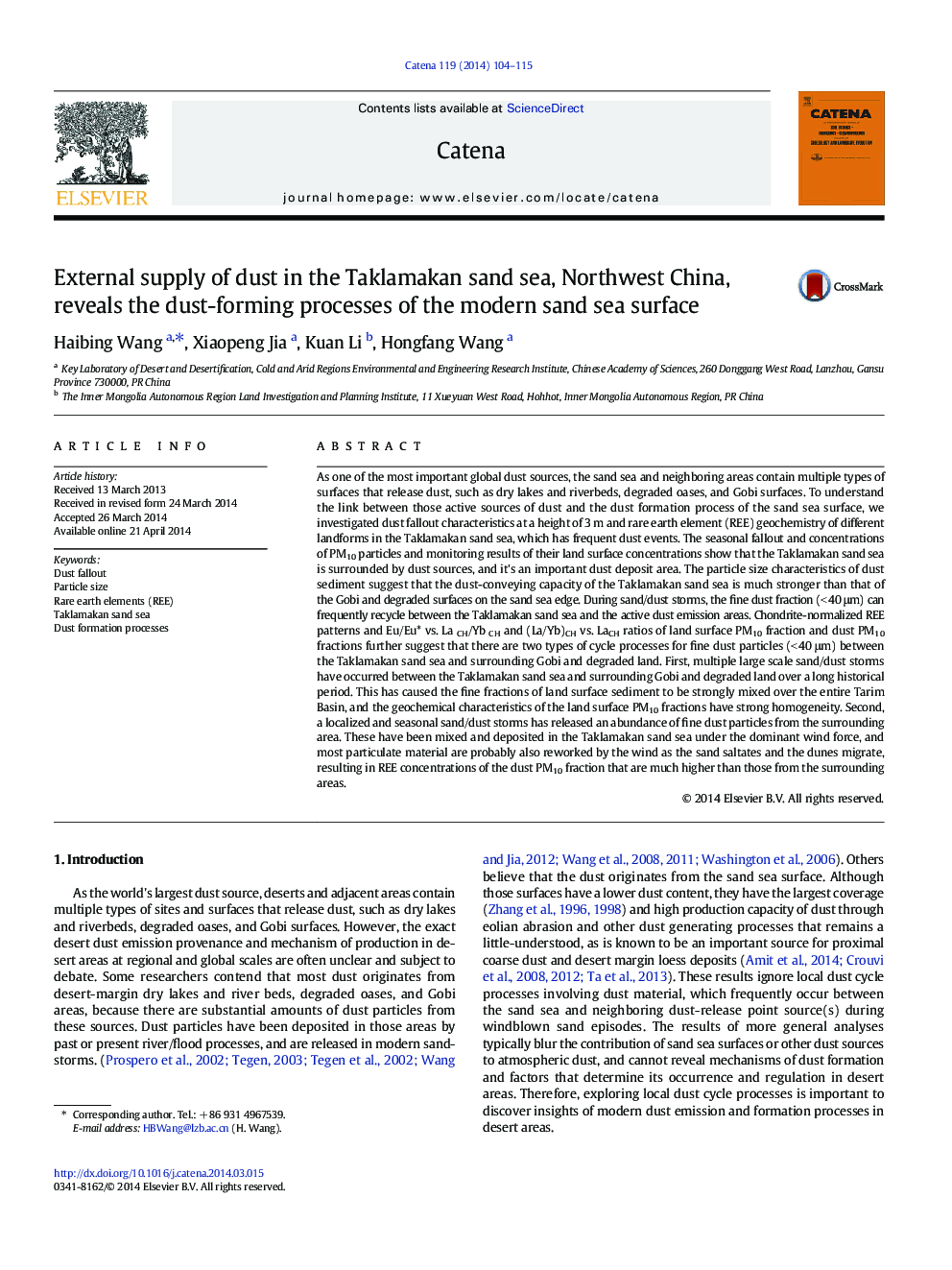| کد مقاله | کد نشریه | سال انتشار | مقاله انگلیسی | نسخه تمام متن |
|---|---|---|---|---|
| 4571452 | 1629233 | 2014 | 12 صفحه PDF | دانلود رایگان |

• We investigated dust-forming processes of the Taklamakan sand sea surface.
• Dust fallout and concentrations of PM10 particles were monitored.
• The particle size composition and rare earth elements of dust were measured.
• The areas surrounding Taklamakan sand sea are the main dust source areas.
• Taklamakan sand sea is also an important source of reworked dust.
As one of the most important global dust sources, the sand sea and neighboring areas contain multiple types of surfaces that release dust, such as dry lakes and riverbeds, degraded oases, and Gobi surfaces. To understand the link between those active sources of dust and the dust formation process of the sand sea surface, we investigated dust fallout characteristics at a height of 3 m and rare earth element (REE) geochemistry of different landforms in the Taklamakan sand sea, which has frequent dust events. The seasonal fallout and concentrations of PM10 particles and monitoring results of their land surface concentrations show that the Taklamakan sand sea is surrounded by dust sources, and it's an important dust deposit area. The particle size characteristics of dust sediment suggest that the dust-conveying capacity of the Taklamakan sand sea is much stronger than that of the Gobi and degraded surfaces on the sand sea edge. During sand/dust storms, the fine dust fraction (< 40 μm) can frequently recycle between the Taklamakan sand sea and the active dust emission areas. Chondrite-normalized REE patterns and Eu/Eu* vs. La CH/Yb CH and (La/Yb)CH vs. LaCH ratios of land surface PM10 fraction and dust PM10 fractions further suggest that there are two types of cycle processes for fine dust particles (< 40 μm) between the Taklamakan sand sea and surrounding Gobi and degraded land. First, multiple large scale sand/dust storms have occurred between the Taklamakan sand sea and surrounding Gobi and degraded land over a long historical period. This has caused the fine fractions of land surface sediment to be strongly mixed over the entire Tarim Basin, and the geochemical characteristics of the land surface PM10 fractions have strong homogeneity. Second, a localized and seasonal sand/dust storms has released an abundance of fine dust particles from the surrounding area. These have been mixed and deposited in the Taklamakan sand sea under the dominant wind force, and most particulate material are probably also reworked by the wind as the sand saltates and the dunes migrate, resulting in REE concentrations of the dust PM10 fraction that are much higher than those from the surrounding areas.
Journal: CATENA - Volume 119, August 2014, Pages 104–115